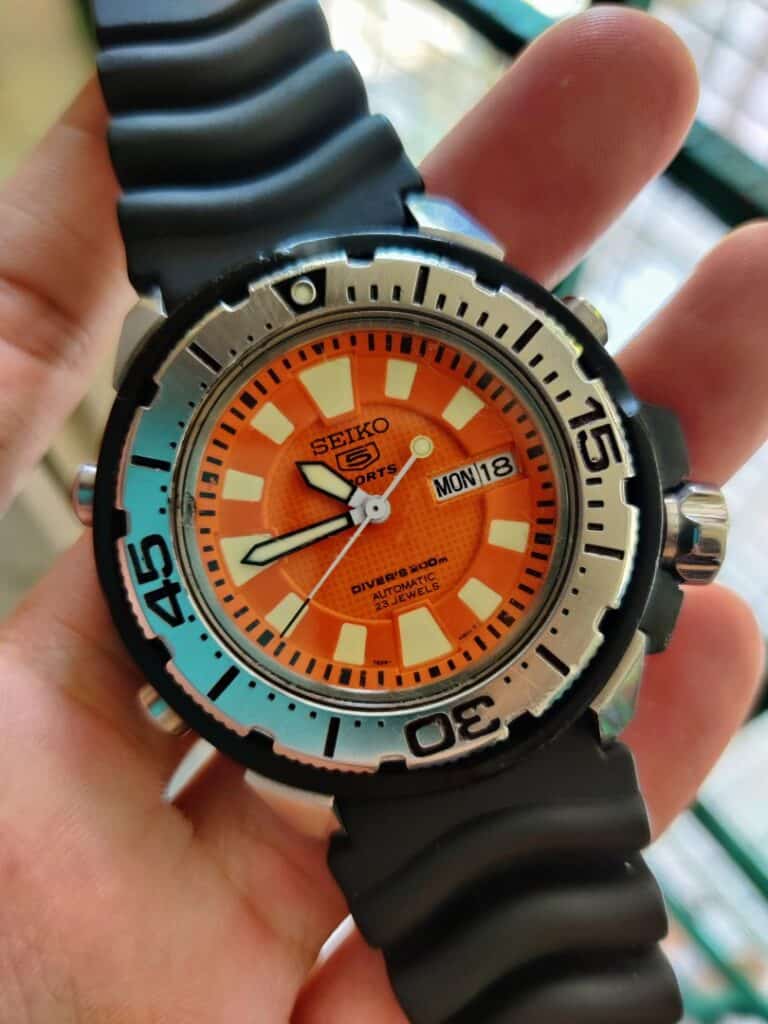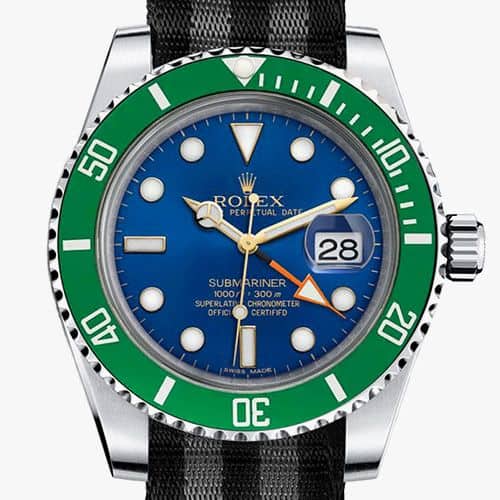By Alan Wood
Learn what a Frankenstein watch is and how to protect yourself with expert guidance from Alan Wood, a trusted vintage watch dealer from Vintage Gold Watches.

Alan Wood is a trusted vintage watch dealer with over 35 years of private collecting experience. After founding Vintage Gold Watches in 2011, his deep knowledge and infectious passion for mechanical timepieces earned him a highly respected reputation in the industry. Vintage Gold Watches has become a renowned dealer thanks to Alan’s expertise and skilled team of restorers. Alan’s love for vintage watches started as a young Mechanical Entrepreneur and grew into an obsession. He believes the finest watches were made in the 1950s, 60s, and 70s, and is thrilled to share them with others.
What is a Frankenstein Watch?
A Frankenstein watch typically refers to a wristwatch that has been altered, customised, or reconstructed using parts from different sources. The creation of such a watch involves post-market modifications, where the original caseback is removed and various components from other watches are integrated.
The term ‘Frankenstein Watch’ is inspired by the character Dr. Frankenstein from Mary Shelley’s 1818 novel. Much like how Dr. Frankenstein assembled his monster from various body parts, a Frankenstein watch combines a dial, hands, case, and base movement from different models or brands to form a unique timepiece.
Understanding Frankenstein Watches and What They Are Not

The term ‘Frankenwatch’ often carries a negative connotation, so it’s essential to clarify what it does not encompass.
Modified Watches (Modding)
Once you’ve purchased a watch, it becomes your personal property, and you can modify it as you see fit. Many enthusiasts in the vintage watch community enjoy customising their timepieces with new dials, hands, bezels, and other components. This practice spans a wide range of brands, from affordable ones like Seiko to high-end models such as Rolex and Patek Philippe. Since these modifications involve aftermarket parts rather than components sourced from other watches, these are generally termed as ‘customised watches’, not ‘Frankenwatches’.
Project Watches
Taking customisation a step further involves assembling a watch from scratch using parts purchased separately. Numerous online suppliers offer all the necessary components for building a watch according to your specifications. These watches are not considered Frankenwatches any more than a new timepiece from a major brand that outsources parts for assembly.
Serviced or Restored Watches
Watches are designed for regular use, often in demanding conditions, which can lead to the wear and tear of parts. To preserve functionality and aesthetics, it’s necessary to replace worn components. Replacing parts during service or restoration—while it may affect originality—does not compromise authenticity as long as genuine manufacturer parts are used. For example, a 1950s watch serviced with modern parts does not become a Frankenwatch.
The key distinction of a Frankenwatch is its creation with the intent to deceive. Unlike a customised Seiko or a serviced Rolex, which fully disclose their modifications or replacements, a Frankenwatch is designed to mislead buyers, creating a façade of authenticity where there is none.
Why are Frankenstein Watches a Problem?
When collectors purchase a watch, especially a vintage one, they seek an authentic representation of the brand’s history and craftsmanship, not a piece assembled from various parts to mimic the original. At its core, a Frankenstein watch is deceptive, and in the watch collecting world—where historical accuracy is paramount—such deception is unacceptable.
At the lower end of the market, a Frankenstein watch might represent a model that never actually existed, pieced together to exploit the demand for vintage watches and capitalise on gaps in collectors’ knowledge.
At the higher end, sophisticated backstories can transform a Frankenwatch into a seemingly rare and significant piece of a brand’s history, particularly if the brand is silent about its past production. For collectors, a watch’s condition is crucial. Assembling a flawless version of a rare model from various parts can deceive both auction experts and bidders, leading to transactions worth millions.
Many Frankenwatches exist due to the overlap in the use of movements among brands. For instance, the Valjoux 72 movement, a popular hand-wound chronograph movement, is found in watches from Invicta to Rolex. While an Invicta might be worth around £200, a Rolex could be valued at £20,000 or more, making it tempting to alter engravings and repaint dials.
Are Recased Watches Considered Frankenwatches?
It’s useful to explore the concept of recased watches to understand their classification. Typically, recased watches involve pocket watch movements, including the dial and hands, being placed into a new wristwatch case. This practice can be seen as a commendable effort to preserve and repurpose exquisite craftsmanship for contemporary use. However, such watches usually do not hold the same value or collectability as those in their original form.
Sellers of recased watches are generally transparent about the origins of the movement and the mismatch between the internal and external components. Issues arise when the dial is not original but has been deliberately recreated to deceive potential buyers about the watch’s true nature.
For instance, if a dial is designed to appear military-issued or is heavily embellished in a manner that the original manufacturer never intended, these watches can be considered Frankenwatches. Such deceptive practices cross the boundary from respectful repurposing to misleading alterations.
How Can You Protect Yourself From Franken Watches?
Knowledge is your best defense against Frankenwatches. Being aware of what a Frankenwatch is enables you to spot them more effectively.
Research any watch you’re interested in thoroughly. If you can’t find an exact match online, consider it a red flag. While your watch might be extremely rare, it’s more likely that it was never produced in that configuration.
Familiarise yourself with the design language of your preferred brands. Watches from the same era will share common features. Once you understand a brand’s specific details, anomalies will become apparent. Look out for misaligned printing on dials or engravings on cases and movements. Be wary if any part of the movement appears unusually shiny, especially if it bears branding.
If your watch has a model number on the case or accompanying paperwork, verify that it matches the watch in question.
Exercise extreme caution with expensive, seemingly rare watches. Fraudsters may invest significant sums to create a perfect replica of a watch that could be worth millions. Check the serial number against auction records. Has this watch been sold before? If so, what did it look like?
Detecting the most sophisticated Frankenwatches requires years of accumulated knowledge and hands-on experience with numerous watches. For this reason, it’s wise to rely on experts. Vintage Gold Watches provides a Lifetime Authenticity Guarantee to ensure that the watch you buy is exactly as the manufacturer intended.

Be Aware, Not Afraid
Frankenstein watches, or Frankenwatches, pose a significant issue for the watch-collecting community, but fortunately, they are relatively rare. It’s important to note that not all Frankenwatches are created with ill intent.
In past decades, collectors were less particular about details and less informed than they are today. Watches were sometimes repaired or assembled using parts from different brands simply to keep them running. If you have concerns about Frankenwatches, consult with the experts at Vintage Gold Watches.
Vintage Gold Watches specialises in vintage watch sales. With a vast stock of around 400 timepieces, we are one of the leading watch dealerships in the UK. If you’d like to stay updated on vintage watch news and be the first to see the latest watches added to our collection, sign up for our weekly newsletter.


